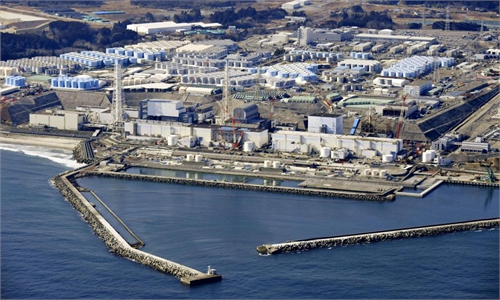Annual report shows China’s environment quality keeps improving; authorities vow to enhance monitoring

The city of Xi'an, Northwest China's Shaanxi Province enjoys good air after rain on May 23, 2023. Photo: VCG
China's environment continued to see improvement in the last year thanks to comprehensive policies and measures, an annual report suggests, while the environmental authorities vowed to further enhance monitoring to reinforce long-term environmental improvement.
China's 339 cities on average enjoyed 86.5 percent of days of good air quality in 2022, surpassing the country's goal by 0.9 percentage points, according to the China Environment Report 2022 published by the Ministry of Ecology and Environment (MEE) on Monday.
Among the main pollutants, PM2.5 density was found at an average rate of 29 micrograms per cubic meter in China's 339 cities in 2022, a 3.3 percent year-on-year drop. Average O3 density was 145 micrograms per cubic meter, a 5.8 percent rise from 2021 rates, according to the report.
The environmental authorities still face challenges.
"The foundation of environmental stability is not solid, and the difficulty of long-term environmental improvement has been increasing," Jiang Huohua, the chief at the Department of Ecological and Environmental Monitoring at MEE, noted at a monthly press conference on Monday.
"Monitoring also indicates that regional ecological degradation issues still exist to varying degrees," Jiang said. In the next step, the ministry will introduce a working plan for ecological quality supervision and monitoring, aiming to comprehensively strengthen the supervision and monitoring of ecological quality, he said.
For instance, in recent years, the impact of sand and dust storms on air quality has attracted attention.
Jiang revealed that the meteorological department has established a relatively comprehensive monitoring and forecasting system for dust and sand weather phenomena. The MEE has been focusing on monitoring and analyzing the impact of dust and sand weather phenomena on air quality, and has formed initial integrated monitoring and forecasting capabilities for the impact of dust and sand weather phenomena on air quality.
"According to analysis, the main sources of dust and sand affecting northern China in several major dust events since this spring are the Gobi Desert region in southern Mongolia and the sand source areas in Northwest China," Jiang noted.
According to the report, the average temperature in China was 10.51 C in 2022, 0.62 C higher than average between 1991 and 2020, and the highest since 1951. Meanwhile, the country's average rainfall was 606.1 mm, 5 percent less than the 1991-2020 usual, and the lowest in the last decade. Carbon emissions per 10,000 yuan of GDP also dropped 0.8 percent from 2021 levels, according to the report.
According to preliminary calculations, total energy consumption in 2022 was equal to 5.41 billion tons of standard coal, an increase of 2.9 percent above 2021 levels. Coal consumption increased by 4.3 percent, crude oil consumption dropped by 3.1 percent, natural gas consumption dropped by 4.3 percent, while electricity consumption increased by 3.6 percent.
Coal consumption accounted for 56.2 percent of total energy consumption, 0.3 percentage points higher than 2021; clean energy consumption such as natural gas, hydropower, nuclear power, wind power, and solar energy accounted for 25.9 percent of total energy consumption, 0.4 percentage points more than 2021.
With regards to the country's biodiversity, China has identified 138,293 species, including 63,886 animals, 39,188 plants, and 655 viruses.
On Monday, the MEE also published the Marine Environment Report 2022, suggesting that the marine environment remained stable that year.
Plastic is the main type of marine debris. The main categories of floating garbage, beach litter, and seabed debris are all plastics, accounting for 86.2 percent, 84.5 percent, and 86.8 percent, respectively.
The nuclear-contaminated water from Japan's Fukushima nuclear power plant has been a concern. According to the report, so far, no abnormal radiation levels have been observed in the jurisdictional coastal areas. The natural radionuclide activity concentration in the seawater of the jurisdictional waters is at normal levels, and there is no significant presence of artificial radioactive nuclides.
Moreover, overall activity concentration of radioactive isotopes associated with nuclear power plant operations in the seawater, sediments, and marine organisms in the coastal areas remains within the fluctuational range seen in previous years, said the report.




